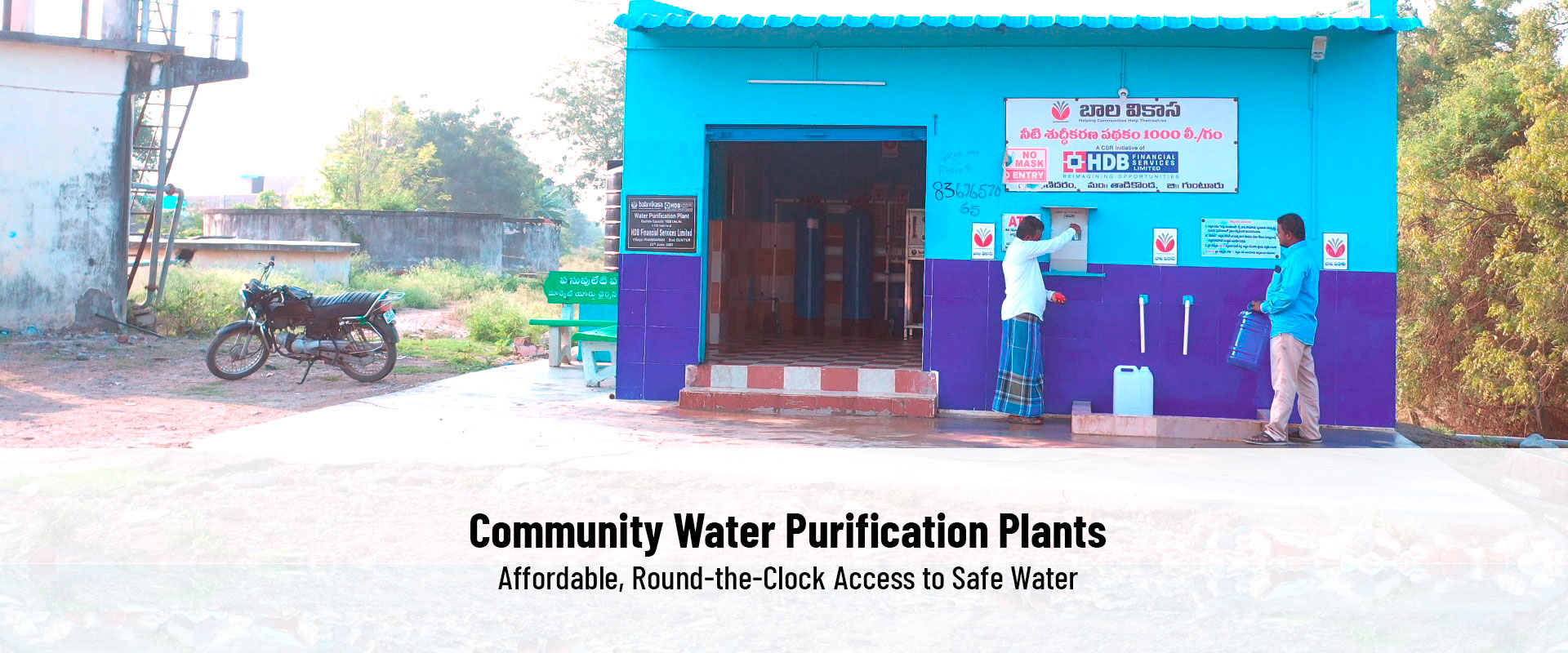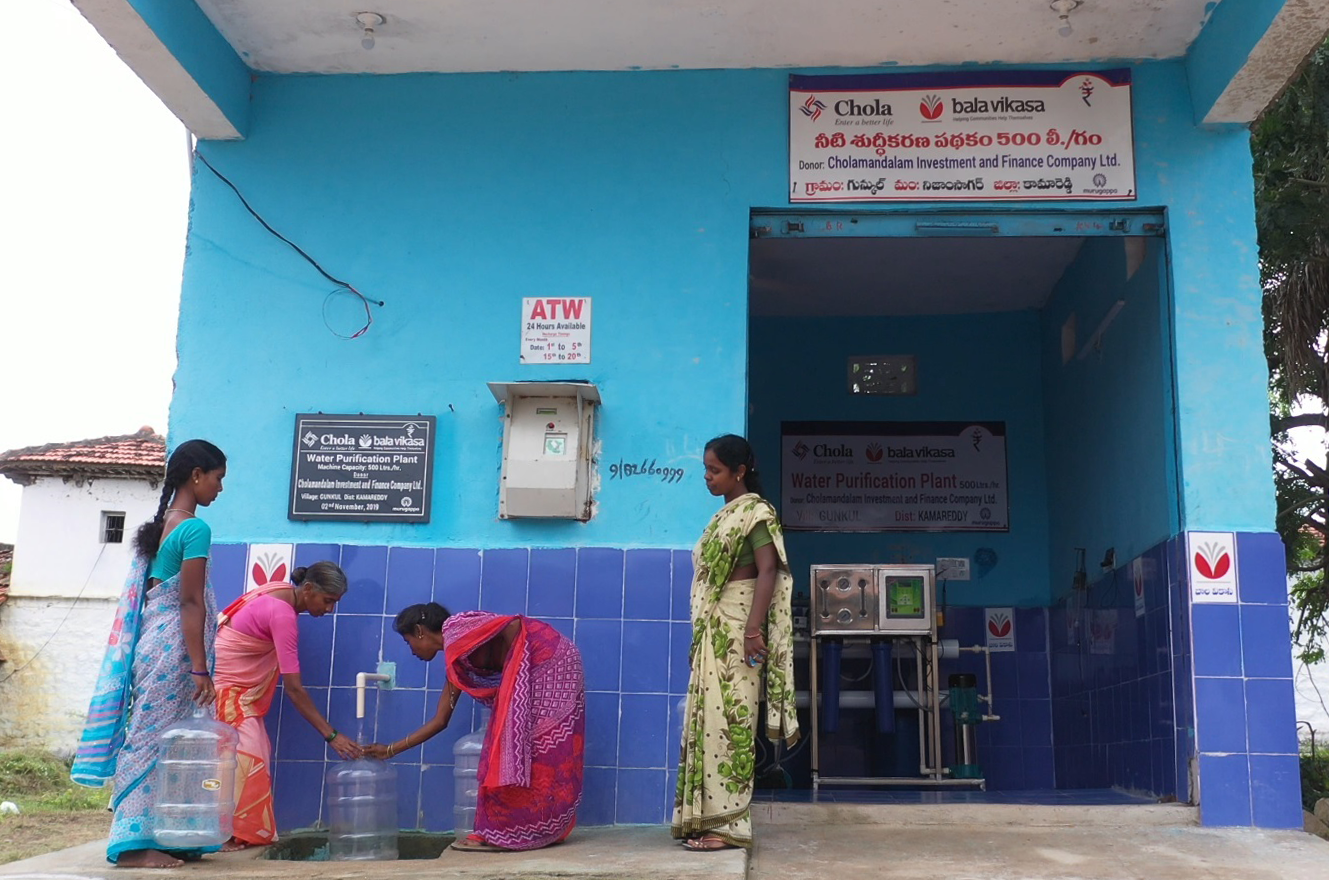
Providing Purified Water to Rural Poor Communities
@15 Paisa Per Litre
About 63.4 million people living in rural India do not have access to clean
water as per a recent report on water and sanitation.
Several thousands of habitations across the country are affected by the presence of Fluoride, Iron, Arsenic, Nitrate, Heavy Metal and Salinity in the drinking water sources. In addition to that, bacterial contamination is also widespread leading to a barrage of diseases and health risks.
Bala Vikasa is resolving this water crisis by setting up Community Water Purification Plants(CWPPs) in rural areas afflicted by fluorosis and other water borne diseases.
Villages with a minimum of 150 Families suffering from more than 2 ppm Fluoride contamination where the Gram Panchayat is willing to provide the water source and allocate space to house the CWPP are identified. A village level meeting is organised to give orientation to the communities and motivate them to actively participate in planning, implementing and managing the CWPPs.
Water Committees, elected from among the community members and trained by us, create aware ness, mobilize resources, enroll more than 90% of the villagers, hold regular review meetings and ensure that the CWPPs are always fully operational. 20% of the project cost is contributed by the community which instills collective ownership.
Rules and regulations regarding the pricing, supply timings, pre-paid card system, operators recruitment and maintenance are formulated in consensus with all the community members which makes the CWPPs truly community-led and free from malpracitce.

00+
Years of
Experience
00+
Water Purification
Plants Installed
00
Million People
Benefited
00+
Committee Members
Actively Inovlved
00
States
Covered
Program Impact
Over the past 20 years, nearly 1420+ Water Purification Plants (WPPs) set up by Bala Vikasa have significantly reduced the incidence of Fluorosis and other related diseases, greatly improved the public health and drastically decreased the spending on medical bills, enabling communities to use those savings for their improving their quality of life.